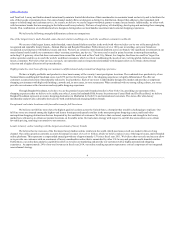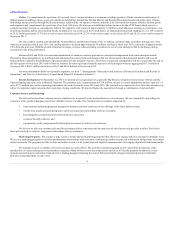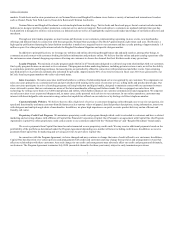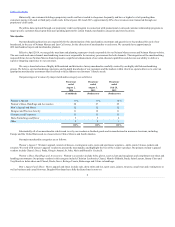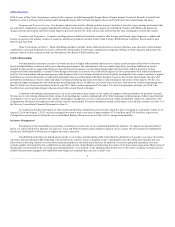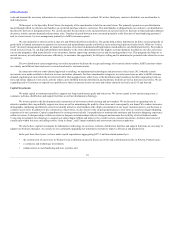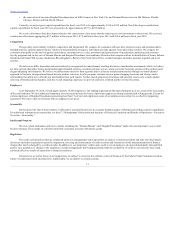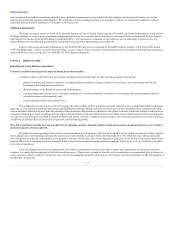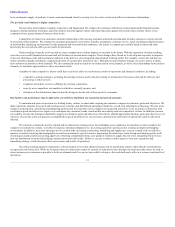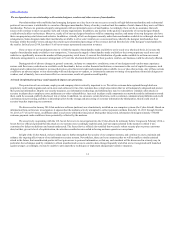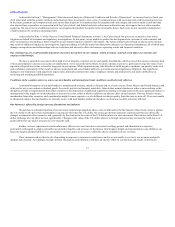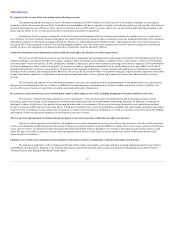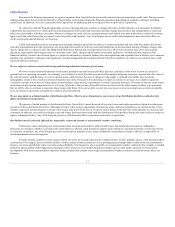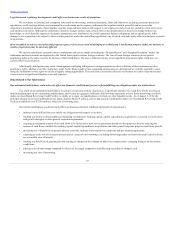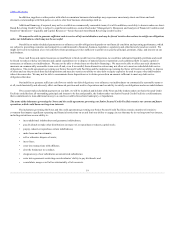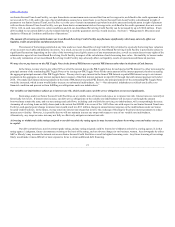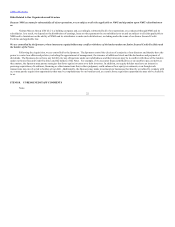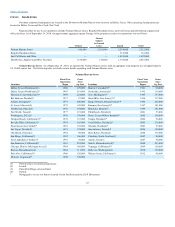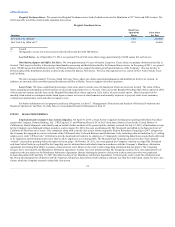Neiman Marcus 2013 Annual Report Download - page 15
Download and view the complete annual report
Please find page 15 of the 2013 Neiman Marcus annual report below. You can navigate through the pages in the report by either clicking on the pages listed below, or by using the keyword search tool below to find specific information within the annual report.
Table of Contents
We are dependent on our relationships with certain designers, vendors and other sources of merchandise.
Our relationships with established and emerging designers are a key factor in our success as a retailer of high-fashion merchandise and a substantial
portion of our revenues is attributable to our sales of designer merchandise. Many of our key vendors limit the number of retail channels they use to sell their
merchandise. We have no guaranteed supply arrangements with our principal sources of merchandise. Accordingly, there can be no assurance that such
sources will continue to meet our quality, style and volume requirements. In addition, any decline in the quality or popularity of our top designer brands
could adversely affect our business. Moreover, nearly all of our top designer brands are sold by competing retailers, and many of our top designers also have
their own proprietary retail stores and websites. In addition, virtually all of our designers currently make their merchandise available to us through wholesale
arrangements. Some designers make their merchandise available to all or select retailers on a concession basis, whereby the designer merchandises their
boutique within the retailer’s store and pays the retailer a pre-determined percentage of the revenues derived from the sale of the designer’s merchandise by
the retailer. In fiscal year 2014, less than 1% of our revenues represented concession revenues.
If one or more of our top designers were to 1) limit the supply of merchandise made available to us for resale on a wholesale basis, 2) increase the
supply of merchandise made available to our competitors, 3) increase the supply of merchandise made available to their own proprietary retail stores and
websites or significantly increase the number of their proprietary retail stores, 4) convert the distribution of goods made available to us from our current
wholesale arrangement to a concession arrangement or 5) exit the wholesale distribution of their goods to retailers, our business could be adversely affected.
During periods of adverse changes in general economic, industry or competitive conditions, some of our designers and vendors may experience
serious cash flow issues, reductions in available credit from banks, factors or other financial institutions, or increases in the cost of capital. In response, such
designers and vendors may attempt to increase their prices, alter historical credit and payment terms available to us or take other actions. Any of these actions
could have an adverse impact on our relationship with such designers or vendors, or constrain the amounts or timing of our purchases from such designers or
vendors, and, ultimately, have an adverse effect on our revenues, results of operations and liquidity.
A breach in information privacy could negatively impact our operations.
The protection of our customer, employee and company data is critically important to us. We utilize customer data captured through both our
proprietary credit card programs and our in-store and online activities. Our customers have a high expectation that we will adequately safeguard and protect
their personal information. Despite our security measures, our information technology and infrastructure may be vulnerable to criminal cyber-attacks or
security incidents due to employee error, malfeasance or other vulnerabilities. Any such incident could compromise our networks and the information stored
there could be accessed, publicly disclosed, lost or stolen. In addition, we outsource certain functions, such as customer communication platforms and credit
card transaction processing, and these relationships allow for the storage and processing of customer information by third parties, which could result in
security breaches impacting our customers.
We discovered in January 2014 that malicious software (malware) was clandestinely installed on our computer systems (the Cyber-Attack). Based on
information from our forensic investigation, it appears that the malware actively attempted to collect payment card data from July 16, 2013 through October
30, 2013 at 77 of our 85 stores, on different dates at each store within this time period. During that time period, information from approximately 350,000
customer payment cards could have been potentially collected by the malware.
We are actively cooperating with the U.S. Secret Service in its investigation into the Cyber-Attack. In testimony before Congress in February 2014, a
Secret Service official explained that the attack on our systems was exceedingly sophisticated, and was unprecedented in the manner in which it was
customized to defeat our defenses and remain undetected. The Secret Service official also testified that we used a robust security plan to protect customer
data, but that, given its level of sophistication, the attacker nevertheless succeeded in having malware operate on our systems.
In light of the Cyber-Attack, we have taken steps to further strengthen the security of our computer systems, and continue to assess, maintain and
enhance the ongoing effectiveness of our information security systems. Nevertheless, there can be no assurance that we will not suffer a similar criminal
attack in the future, that unauthorized parties will not gain access to personal information, or that any such incident will be discovered in a timely way. In
particular, the techniques used by criminals to obtain unauthorized access to sensitive data change frequently and often are not recognized until launched
against a target; accordingly, we may be unable to anticipate these techniques or implement adequate preventative measures.
14


